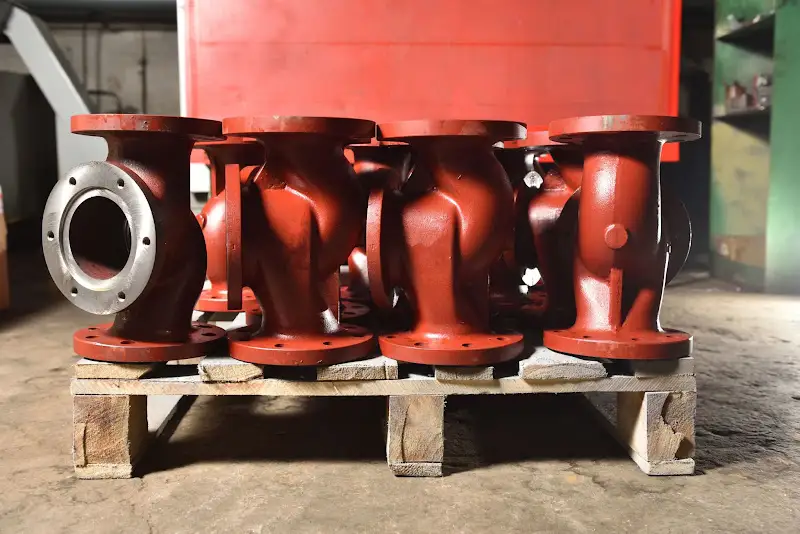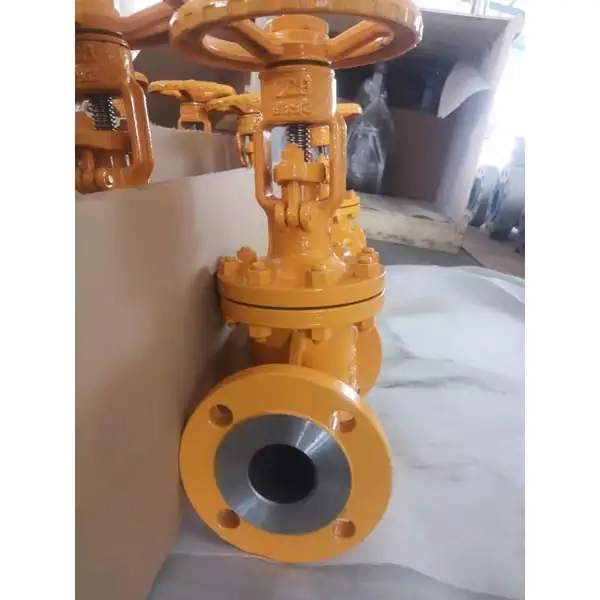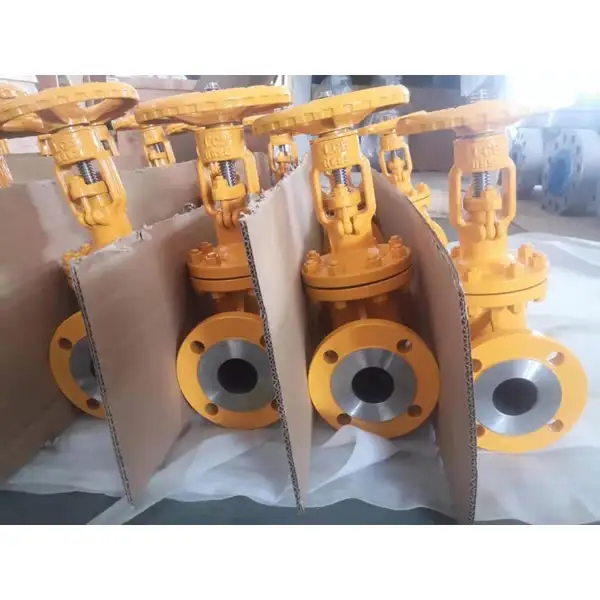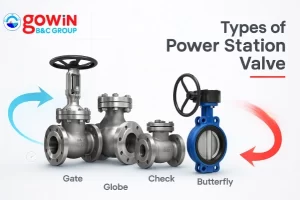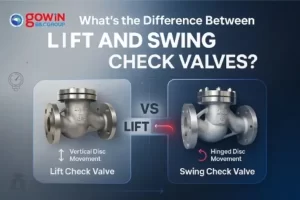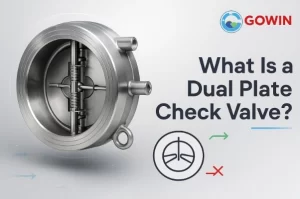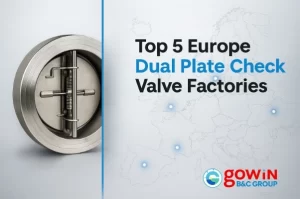विषयसूची
टॉगलThe main difference between a resilient seat gate valve and a resilient wedge gate valve lies in how each achieves a tight seal and controls fluid flow.
ए resilient seat gate valve uses a soft elastomer (like rubber) on the seat to ensure tight sealing, while a resilient wedge gate valve integrates that soft material into a wedge-shaped gate that presses firmly into the seat.
In simple terms, both are gate valves that offer excellent sealing against leaks, but the resilient wedge design provides a tighter, more flexible seal under pressure variations. Understanding these differences helps industries—from water treatment to oil and gas—select the right valve for safe, efficient, and long-lasting performance.
This article breaks down both types, explains their applications, and highlights the key advantages of each.
What Is a Resilient Seat Gate Valve?
A resilient seat gate valve is a type of gate valve that uses a soft sealing material such as EPDM rubber or NBR to ensure a tight shutoff. The metal body holds the seat in place while the resilient material deforms slightly to seal gaps, preventing even the smallest leaks.
Key features:
- Excellent sealing capability due to soft materials.
- Corrosion resistance and long lifespan.
- Commonly used in low- to medium-pressure systems.
इन वाल्व are ideal for clean water supply, sewage pipelines, and irrigation systems, where precise shutoff is critical but extreme temperature resistance is not required.
In short, resilient seat gate valves are known for their leak-proof performance, low maintenance, और ease of operation, making them a standard in modern fluid systems.
What Is a Resilient Wedge Gate Valve?
A resilient wedge gate valve takes the concept one step further. Instead of just having a soft seat, it features a wedge-shaped gate coated or lined with a resilient material. This design allows the wedge to press evenly into the valve seat, creating uniform pressure and a more reliable seal.
The wedge design also helps prevent vibration and noise during operation, which is common in pipelines that experience pressure fluctuations.
Applications include:
- जल एवं अपशिष्ट जल उपचार plants.
- Power generation facilities.
- Industrial pipelines for non-corrosive fluids.
Key benefits:
- Better sealing performance under varying pressure.
- Greater resistance to wear and deformation.
- Improved flow control with minimal fluid loss.
In simple terms, a resilient wedge gate valve offers a more durable sealing mechanism for heavy-duty industrial use.
What Is the Difference Between a Gate Valve and a Wedge Valve?
At first glance, both may look similar, but their internal structure makes all the difference.
A gate valve generally has a flat or parallel gate that moves up and down to block or allow fluid flow. A wedge valve, however, uses a gate shaped like a wedge, which fits snugly into matching seats on both sides. The wedge design helps maintain a tight seal even if the seats wear slightly over time. It also prevents debris from getting trapped, which can damage the sealing surfaces.
In short, resilient seat gate valves are perfect for systems requiring simple shutoff, while resilient wedge gate valves are better suited for tougher industrial environments that demand tighter sealing and longer life.
How Do Resilient Materials Improve Valve Performance?
The term “resilient” refers to flexibility. In valves, this means the sealing material can bend slightly under pressure and then return to its original shape.
Here’s why that matters:
- It compensates for minor surface imperfections in the metal body.
- It ensures leak-tight performance, even after repeated use.
- It reduces the need for frequent maintenance.
For example, EPDM and NBR rubbers are commonly used in resilient seat gate valves because they handle water, air, and light oils efficiently, maintaining elasticity across temperature changes.
By combining metal strength and rubber flexibility, these valves achieve durability and performance that traditional all-metal designs often lack.
What Are the Two Types of Gate Valves?
Gate valves are broadly classified into:
- Metal-seated gate valves – These use metal-to-metal contact, offering high-temperature resistance but limited sealing tightness.
- Resilient-seated gate valves – These feature soft sealing materials like rubber, providing superior leak-proof performance for low- and medium-pressure systems.
Among resilient-seated designs, the resilient wedge gate valve is the most advanced form, combining flexible sealing with a strong, wedge-shaped gate for better alignment and sealing under pressure.
When to Use Each Type
| Type | सर्वश्रेष्ठ के लिए | तापमान की रेंज | Sealing Strength |
| Resilient Seat Gate Valve | Water supply, sewage, and irrigation | Up to 80°C | Excellent |
| Resilient Wedge Gate Valve | Industrial systems, high-pressure pipelines | Up to 120°C | Superior |
If your system operates under stable pressure and requires zero leakage, a resilient seat gate valve is sufficient. But if you need durability and stability under fluctuating pressures, choose a resilient wedge gate valve.
Benefits of Choosing the Right Valve
- Improved system safety – Reduces the risk of leaks or water hammer.
- Longer equipment lifespan – Proper valve choice prevents corrosion and damage.
- Lower maintenance cost – Resilient materials reduce repair frequency.
- Enhanced flow control – Wedge valves provide better throttling and sealing balance.
Selecting the right valve type ensures optimal performance and compliance with industrial standards like API6D and ISO9001, commonly certified by manufacturers such as GOWIN Industrial Valve.
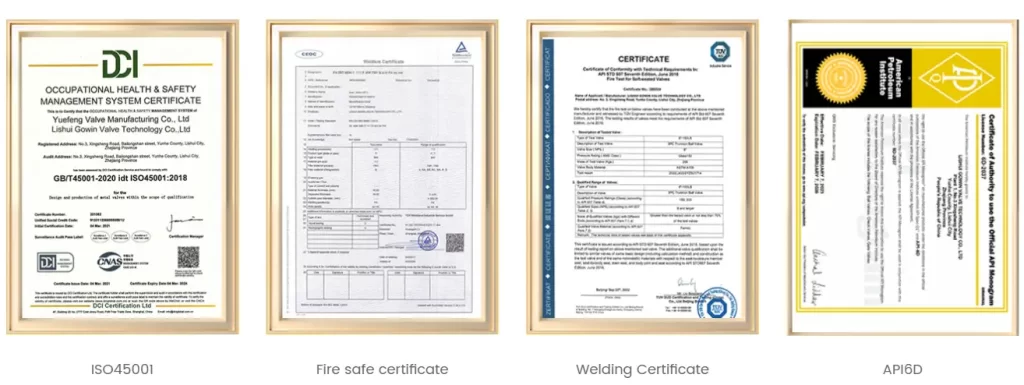
Conclusion: Choose Quality, Choose Confidence
Whether you need a resilient seat gate valve or a resilient wedge gate valve, the key is understanding your system’s requirements. The resilient seat design is ideal for standard water and air systems, while the wedge version performs better under heavy-duty conditions.
For guaranteed performance and durability, explore the collection of resilient gate valves from गोविन औद्योगिक वाल्व. With over 16 years of experience, GOWIN delivers ISO- and API-certified valve solutions trusted worldwide.
Build your system with precision, reliability, and resilience—choose GOWIN.

पूछे जाने वाले प्रश्न
1. What is the difference between a gate valve and a wedge valve?
A gate valve uses a flat or parallel gate, while a wedge valve has a wedge-shaped gate that ensures tighter sealing and better pressure resistance.
2. What is a resilient seat valve?
It’s a gate valve with a soft sealing surface made from rubber or plastic, providing superior leak-proof performance and smooth operation.
3. What does resilient wedge mean?
A resilient wedge refers to a gate coated with flexible material that improves sealing, durability, and noise reduction.
4. What are the two types of gate valves?
They are metal-seated gate valves and resilient-seated gate valves. The resilient type offers better sealing for water and non-corrosive fluids.

